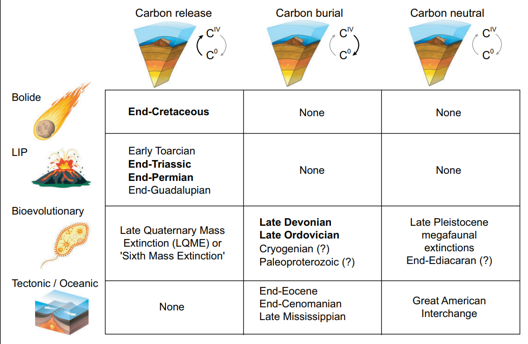EES Guest Speaker - Dr. Thomas Algeo
Join us thi Friday, January 12, 2024 at 12:30PM in room 204 NS for Dr. Thomas Algeo's talk:
Theory regarding the causation of mass extinctions is in need of systematization. Every mass extinction has both an ultimate cause, i.e., the trigger that leads to various climato-environmental changes, and one or more proximate cause(s), i.e., the specific climato-environmental changes that result in elevated biotic mortality. Ultimate causes include bolide impacts, large igneous province eruptions, and bioevolutionary events. With regard to proximate mechanisms, most extinctions are related to either carbon-release or carbon-burial processes, the former being associated with climatic warming, ocean acidification, reduced marine productivity, and lower carbonate d13C values, and the latter with climatic cooling, increased marine productivity, and higher carbonate d13C values. In this context, mass extinction causation can be usefully classified using a matrix of ultimate and proximate factors (see Figure). Among the Big Five mass extinctions, the end-Cretaceous biocrisis is an example of a bolide-triggered carbon-release event, the end-Permian and end-Triassic biocrises of LIP-triggered carbon-release events, and the Late Ordovician and Late Devonian biocrises of bioevolution-triggered carbon-burial events. Whereas the bolide-impact and LIP-eruption mechanisms appear to invariably cause carbon release, bioevolutionary triggers can result in variable carbon-cycle changes, e.g., carbon burial during the Late Ordovician and Late Devonian events, carbon release associated with modern anthropogenic climate warming, and little to no carbon-cycle impact due to certain types of ecosystem change (e.g., the advent of the first predators around the end-Ediacaran; the appearance of Paleolithic human hunters in Australasia and the Americas).



